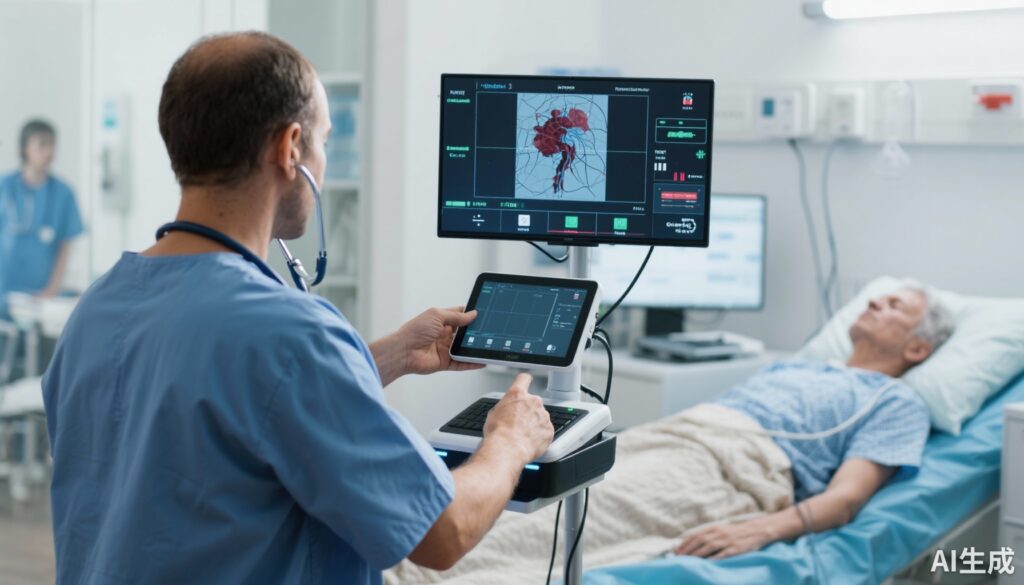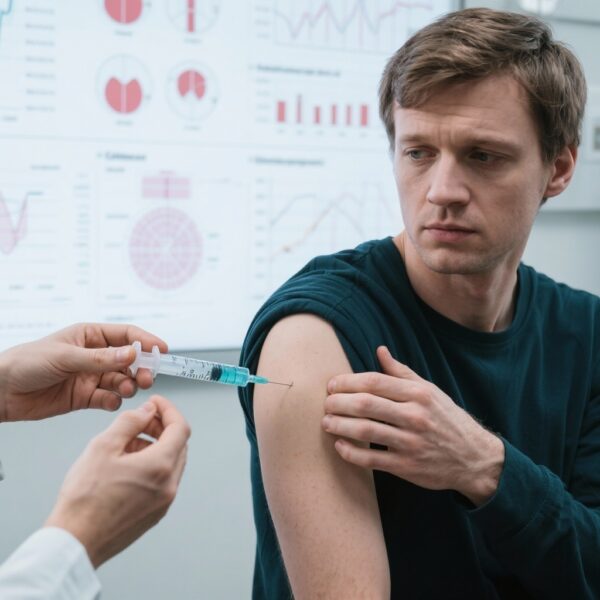Highlight
1. Telestroke utilization was associated with a 61% higher adjusted odds of receiving intravenous thrombolysis in acute ischemic stroke patients eligible for treatment.
2. Despite increased treatment rates, telestroke evaluation corresponded to longer door-to-needle (DTN) times and a lower likelihood of meeting the guideline-recommended DTN within 60 minutes.
3. Transferred patients evaluated with telestroke experienced significantly prolonged door-in-door-out (DIDO) times compared to those not assessed via telestroke.
4. These findings underscore a critical need to identify and mitigate factors contributing to treatment delays associated with telestroke to optimize patient outcomes.
Study Background
Acute ischemic stroke (AIS) represents a leading cause of death and long-term disability globally, with timely reperfusion therapy being paramount to improving functional outcomes. Intravenous thrombolysis with tissue plasminogen activator (tPA) is time-sensitive and ideally administered within 60 minutes of hospital arrival (door-to-needle time, DTN), as endorsed by stroke management guidelines.
Telestroke services, leveraging telemedicine technology, expand access to expert stroke evaluation and treatment decisions, particularly in rural or resource-limited hospitals. While telestroke programs can increase thrombolysis accessibility, concerns remain regarding potential delays inherent in remote assessments and interhospital transfers, which may counterbalance benefits. This study aimed to clarify how telestroke compares to traditional examination regarding treatment times and outcomes in a real-world stroke registry setting.
Study Design
This retrospective cohort study utilized data from the Paul Coverdell Michigan Stroke Registry, encompassing 42 hospitals and including adults aged 18 years or older presenting with AIS between January 1, 2022, and December 31, 2023. Inclusion criteria focused on patients presenting within 4 hours of last known well time and lacking documented thrombolysis contraindications, thus eligible for intravenous thrombolysis.
Exposure was defined as patient evaluation through telestroke consultation vs. no telestroke (standard in-person neurological evaluation). Primary endpoints were receipt of thrombolysis and door-to-needle time both as a continuous measure and dichotomized as ≤60 minutes versus >60 minutes. Secondary outcomes assessed discharge ambulatory status, discharge disposition, and door-in-door-out time in transferred patients.
Multivariable hierarchical logistic and linear regression models adjusted sequentially for demographic variables, medical history, arrival characteristics, and hospital attributes to evaluate associations between telestroke use and outcomes.
Key Findings
Among 3,036 eligible patients analyzed (mean age 69.7 years, 51.5% male), 785 (25.9%) underwent telestroke evaluation and 2,251 (74.1%) received in-person assessment without telestroke.
Thrombolysis Utilization:
Overall thrombolysis rate was 55.1%. Patients evaluated via telestroke had significantly higher odds of receiving thrombolysis (adjusted odds ratio [aOR], 1.61; 95% confidence interval [CI], 1.17-2.23), indicating greater access to reperfusion therapy through telestroke support.
Door-to-Needle Time:
Despite higher thrombolysis rates, telestroke patients experienced longer mean DTN times by 6.55 minutes (95% CI, 2.12-10.97 minutes). Moreover, telestroke patients had 44% lower odds of achieving a guideline-concordant DTN ≤60 minutes (aOR, 0.56; 95% CI, 0.39-0.81).
Transfer Patients and Door-in-Door-Out Time:
Among 255 transferred patients, 81.2% received thrombolysis. Those evaluated by telestroke had prolonged DIDO times by a mean of 46.90 minutes (95% CI, 1.08-92.72 minutes), reflecting transfer-related delays possibly exacerbated by remote evaluation logistics.
Secondary Outcomes:
Discharge ambulatory status and disposition were not reported in detail but are critical clinical parameters warranting further investigation in future studies.
Expert Commentary
The findings provide an important nuanced understanding of telestroke’s role in acute stroke care. While telestroke significantly increases thrombolysis utilization—a critical stride toward improving treatment equity—this advantage is tempered by delays in reperfusion onset and transfer processes. The 6–7 minute average DTN delay and markedly longer DIDO time in transfers can negatively affect patient outcomes, as stroke is highly time-sensitive.
Potential mechanisms for delays include coordination challenges inherent in teleconsultation, technology-related issues, additional steps in communication pathways, or resource limitations at spoke hospitals. These findings align with prior literature suggesting that telemedicine systems must be optimized not only for diagnostic accuracy but also for workflow efficiency.
Stroke guidelines emphasize DTN ≤60 minutes as a quality metric, and the reduced odds of meeting this benchmark with telestroke call for targeted quality improvement interventions. Strategies might encompass streamlined teleconsult workflows, enhanced local stroke team training, and standardized protocols to expedite imaging, decision-making, and thrombolysis administration.
Limitations of the study include its retrospective nature and lack of granular data on functional outcomes and in-hospital stroke care components that impact delays. The generalizability might vary with telestroke program maturity and regional healthcare systems.
Overall, this study provides a critical evidence base to refine telestroke implementation and balance the benefits of expanded access with minimizing treatment delays.
Conclusion
In the management of acute ischemic stroke, telestroke consultation significantly improves access to thrombolysis, increasing treatment rates by over 60%. However, this benefit is offset by prolongation of door-to-needle times and transfer delays, which are crucial determinants of clinical outcomes. Future research should focus on identifying modifiable factors within telestroke workflows to reduce treatment intervals and improve guideline concordance. Enhancing telemedicine infrastructure and process efficiencies can optimize stroke care delivery, particularly in underserved areas, ultimately improving patient prognosis.
Funding and ClinicalTrials.gov
The study was supported by the Paul Coverdell Michigan Stroke Registry with no competing interests declared. No clinical trial registration was indicated for this retrospective registry analysis.
References
- Stamm B, Whitney RT, Royan R, et al. Telestroke and Timely Treatment and Outcomes in Patients With Acute Ischemic Stroke. JAMA Netw Open. 2025;8(9):e2534275. doi:10.1001/jamanetworkopen.2025.34275.
- Saver JL. Time is brain—quantified. Stroke. 2006 Jan;37(1):263-6. doi:10.1161/01.STR.0000196957.55928.ab.
- American Heart Association/American Stroke Association Stroke Council. 2019 Update to the 2018 Guidelines for Early Management of Acute Ischemic Stroke. Stroke. 2019 Mar;50(3):e344-e418. doi:10.1161/STR.0000000000000211.
- Silva GS, Farrell S, Shandra E, Viswanathan A, Schwamm LH. The Status of Telestroke in the United States. A Survey of Currently Operational Telestroke Networks. Stroke. 2012 Oct;43(10):2078-85. doi:10.1161/STROKEAHA.112.670484.


